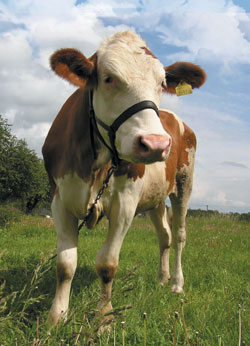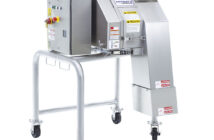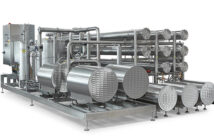By Malik Altaf Hussain, Yu Sheng and Grant Bennett, Department of Wine, Food and Molecular Biosciences, Lincoln University
The use of non-pathogenic live organisms (generally known as probiotics), that benefit the host animal by improving the intestinal microbial balance, is gaining popularity in dairy farming systems globally. Administration of these microbes in adequate amounts would exert positive influences on the health of the animal.
A unique microflora establishes in the ruminants’ GI tract during early stage of their lives. Amazingly the first established microorganisms will form main components of the gut microbiota in the rest of their lifespan. However, there are certain periods in the animals’ lives when it becomes difficult to maintain a balanced microflora and they face high risk of catching an illness. This is time when they need external support to get through the stressful periods, particularly – weaning, beginning of the lactation period, a dietary shift from high forage to high readily fermentable carbohydrates.
It is believed that the addition of microbial preparations to the diet will help in maintaining healthy microbial populations in GI tract and providing a continuous protection against harmful microbes. Thus, the use of probiotics has given a new opportunity to the veterinary field as well.
Key objectives of feeding probiotics to animals are – to improve the production and health, to prevent diseases, to minimise foodborne illness and antibiotic resistance in humans and to stop/reduce shedding of pathogenic bacteria.
The most common marketed products for ruminants contain live yeast (Saccharomyces cerevisiae). In dairy and beef animals, live yeasts improve performance by increasing the dry matter intake and thereby the milk production in dairy ruminants. The beneficial impact is attributed to greater total culturable ruminal bacterial population, stimulated growth and fibre-degrading activities of cellulolytic microorganisms leading to better fibre digestibility, stability of ruminal pH and decreases the risk of acidosis. On other hand, in young ruminants target organ is small intestine because rumen is not fully developed. Bacterial species such as Lactobacillus, Bifidobacterium, Enterococcus and Propionibacterium are found to be more beneficial in stabilising the gut microbiota and prevent the risk of developing colonisation of pathogens.
Probiotics are recognised as microbes that colonise the gut and benefit the host. These benefits include decreasing incidence of diarrhoea and gut disease in cattle, and increasing weight gain in sheep, pigs, chickens and calves. Generally two mechanisms are widely proposed to explain how these benefits could occur. Firstly some probiotic bacteria such as the lactobacilli appear to act as immune modulators which improve immune responses and decrease inflammation. Secondly many probiotic microbes are effective competitors and able to compete better for resources (primarily nutrients) and/or kill pathogens directly using secreted proteins.
Despite the opportunities that probiotics industry presents to agriculture they are not straightforward to use since it can be difficult to deliver a regular high dose of live microbes to animals economically and practically within a farming system. Compounding these issues are that unlike a drug, a probiotics effectiveness is largely determined by the farming system they are used in since if an animal is not depleted of native probiotic microbes or under disease pressure, a probiotic may be ineffective.
The science how to use probiotics in animal settings is advancing rapidly. At this stage, probiotics represent an underutilised tool in the New Zealand agriculture with many opportunities to improve animal health and production.





























































































